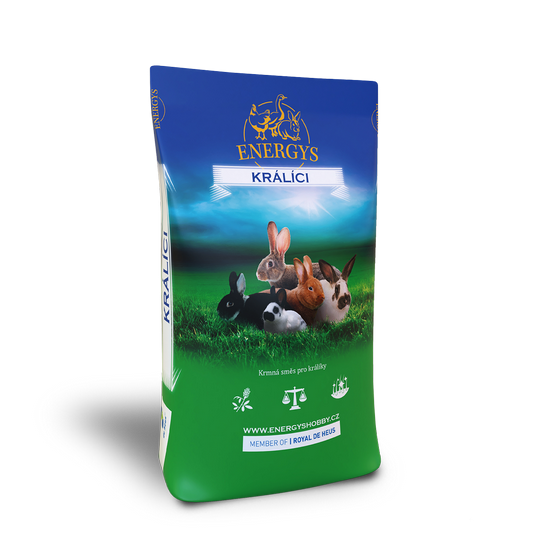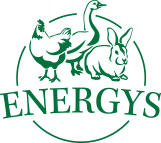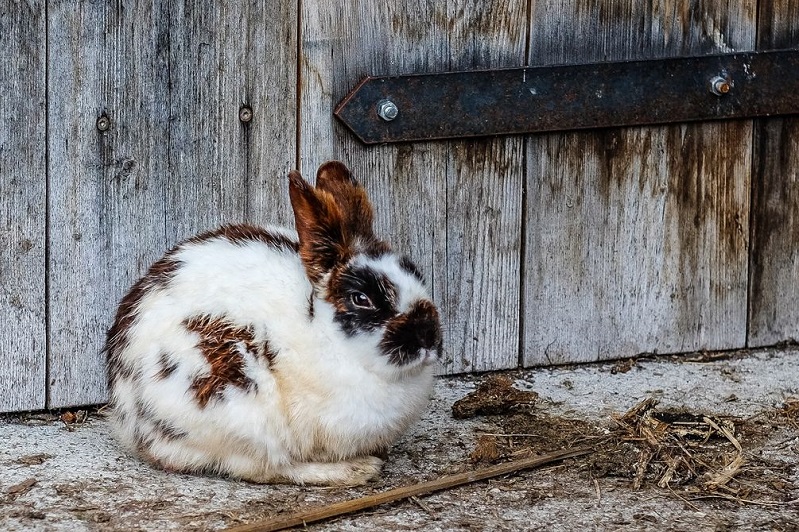Rabbits
Poultry
Laying hens
Quails
Guinea pigs
Pigs
Ostriches
Sheep and goats
Pigeons
Pheasants
Forest animals
Rabbit diseases and their treatment – e.Coli and enterocolitis
In this article we look at two diseases – e.Coli and enterocolitis.
E. coli (diarrhoea)
E. coli bacteria commonly inhabit the intestinal tract. There are many different types and some of them are highly pathogenic, e.g. type O-15 and O-103. Problems occur depending on the resistance, stress and pathogenicity of the E. coli.
Manifestations of the disease
In the first week after birth, strong-smelling and often yellow diarrhoea, caused by E. coli bacteria, can be observed. This is the diarrhoea of newborn pups, or diarrhoea from excessive fat. This problem is usually observed in breeding females that have been overfed (too much fat) during the rearing period. It is a correlation between E. coli and the feeding method. However, diarrhoea caused by E. coli is most common from 5 weeks of age onwards.
Treatment and prevention
These problems can usually be managed with antibiotics, or in combination with safer feeding with a higher crude fibre content. Antibiotics are used depending on the sensitivity of the bacteria. They are often used: Neomycin 4 grams per 10 litres of water or Doxycycline 50% 4 grams per 10 litres of water or Tiamulin 10 ml per 10 litres of water. Consult your veterinarian for appropriate treatment.
Clean, disinfected drinking water is generally important (acidification to ph 4.2).
Enterocolitis/enterocolitis (or “bubonic plague”)
The first symptoms, such as constipation, diarrhoea and water accumulation in the intestines, can be observed from 6 weeks of age. The formation of gas in the intestines, which cannot leave due to blockage of the appendix, results in a distended tummy. Bloated gassy tummy can often be seen, which has given this disease its lay name.
What causes the disease?
Enterocolitis is a typical disease caused by several factors. Poor ventilation, infection, hygiene, and overall health and immunity contribute to the severity of the intensity of the disease. On laboratory analysis, Clostridium perfringens bacteria can often be found in combination with E. coli. Later, coccidiosis is quite often added.
Treatment
Bacivet-S (zincbacitracin) water-soluble can be used for treatment. It is often used from one week before weaning to 2 weeks after weaning. Good results are also obtained when Bacivet-S is given 10 days before weaning, followed by one week with plain water and then again with Bacivet-S for one week. An alternative preparation is Tylosin at a dose of 0.5 g per 10 litres of water. This preparation is used at a low dose from before weaning until 1 week before slaughter. Another alternative may be Pulmotil.
It is known that by interacting with other factors, it can also help reduce problems by feeding feed with increased crude fibre content. As females are fed a highly concentrated feed, it is recommended that a high fibre feed is fed no later than 24 days after weaning.
Related posts
10. April 2024
Keeping dwarf rabbits as pets is becoming increasingly popular. It does not require a lot of space and is ideal for people who live in smaller homes or apartments. Dwarf rabbits are also very friendly, so it’s no wonder that people are choosing them for this purpose more and more often. As with all animals,…
30. August 2022
In this article we will discuss several rabbit diseases – ear scab, tyzzer’s disease and heat stress.
24. August 2022
In this article we look at two diseases – e.Coli and enterocolitis.
2. August 2022
In this article we look at two common rabbit diseases, myxomatosis and infectious rhinitis.
13. July 2022
In the following article we will discuss rabbit plague – rhd or vhd (viral haemorrhagic disease of rabbits).
Related products

RABBIT DWART
Complete pelleted feed for dwarf rabbits with high digestibility. It contains a high proportion of fibre (high alfalfa and grass cake content) and a reduced sugar and starch content. Contains flaxseed, which has a positive effect on coat quality. Suitable for daily feeding. We recommend providing rabbits with safe fresh water and hay.

RABBIT CHAMPION
Feed for show rabbits, does not include Coccidiostat. A unique mix significantly supports the quality and growth of fur. Serve when moulting and at least two months before the start of the show season.

RABBIT GOLD FORTE
A premium feed mix in an ideal make up for gestating and breast feeding females. For the intensive fattening of rabbits for a period of up to 5 days before slaughter. It supports fast growth, meat content and an excellent state of health. It contains a coccidiostat which lowers the risk of mortality.

RABBIT KLASIK FORTE
Intended for the fattening of rabbits up to a point at least 5 days before slaughter. Suitable for attaining a high meat content and an excellent state of health. Thanks to its Coccidiostat content it lowers the animals mortality.

RABBIT KLASIK
For the final phase of rabbit fattening, a minimum of 5 days before slaughter. It supports high meat content and excellent taste qualities in rabbit meat. Without a coccidiostat.

RABBIT START
For young rabbits from the start of accepting feed to 4-6 weeks after weaning. The feed helps to significantly lower the death rate in the period around weaning. It contains a raised percentage of fibre and less starch. It does not contain a coccidiostat.

